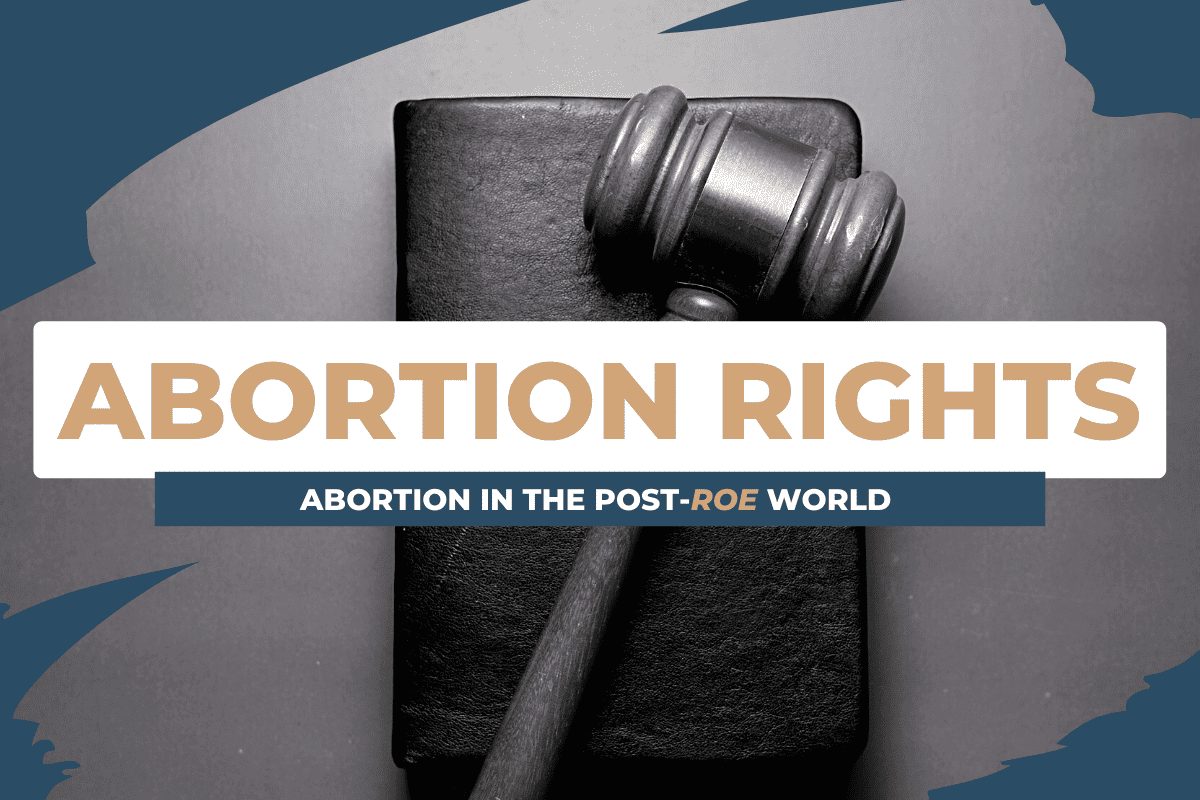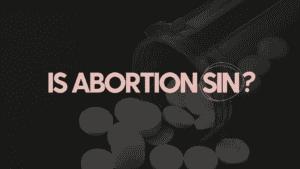6/24/22. The day that the American human rights landscape shifted. In a 5-4 majority decision, the Supreme Court voted to overturn Roe v. Wade and Planned Parenthood v. Casey – two landmark decisions that solidified a constitutional right to abortion – in Dobbs v. JWHO. Suddenly, the United States was in an uproar over “abortion rights.”
Is Abortion a Constitutional Right?

When abortion was legalized nationwide in 1973 through Roe, the Supreme Court claimed that it is a “constitutional right,” thereby nullifying existing state laws that prohibited it.
However, on June 24, 2022, the Court recognized that abortion is not a constitutional right.
What is Stare Decisis?
One argument against overruling Roe was that it could violate stare decisis. Stare decisis means “to stand by things decided” in Latin. Essentially, when a court faces a legal argument, if a previous court has ruled on the same or a closely related issue, the court will make their decision in alignment with the previous court’s decision. There are no concrete rules for when a court can break this precedent. However, though unusual, it has happened. Previous decisions to overturn cases at the Supreme Court level have occurred hundreds of times before Dobbs v. JWHO. But the court will only go against precedent when the previous decision is no longer workable or viable, typically when scientific, social or political conditions have significantly advanced.
Held: The Constitution does not confer a right to abortion; Roe and Casey are overruled…
Page 1, Dobbs v. JWHO Majority Decision
Watch: "Abortion is a Constitutional Right"
Is Abortion Legal?

In contrast to the blanket legalization of abortion set forth in Roe, the recent Dobbs decision simply turns the choice of allowing abortion back to the states. American abortion procedures have not stopped. But fortunately, citizens can now vote on the issue – something Roe wouldn’t allow.
The country is currently split. While half the states are leaning toward or have already implemented legislation banning abortion, others have moved to actually expand abortion rights. Some are even going so far as to label themselves “abortion sanctuaries.”
What are Trigger Laws?
Within a matter of hours of the Dobbs ruling, multiple states had already outlawed abortion through trigger laws. Trigger laws are created prior to a ruling, allowing enforcement of said laws immediately after protection (i.e., from Roe) is revoked. An example would be “Heartbeat Bills” that were previously blocked from state law on the basis of Roe’s ruling. In an interview with Politico, Denise Harle explains:
"All of our laws should protect innocent lives. If Roe is overturned, any injunctions against a state’s pre-Roe law that were based on Roe would no longer hold. Once those injunctions are dissolved, the law can be enforced."
Denise Harle, Alliance Defending Freedom
Watch: See Life 2022
Abortion Laws By Country

Though abortion is common worldwide, we are one of only seven countries that allows late-term abortion. In fact, some states allow abortion until birth rather than viability, something even Roe didn’t include protection for.
The U.S. is considered one of the most radically pro-abortion countries in the world given current legislation. However, there are several other countries whose pro-abortion laws enable genetic discrimination and even genocide.
Genetic Discrimination
Discrimination through abortion is why Iceland, among other countries, claims to have nearly eradicated Down syndrome. Nearly 100 percent of preborn children with Down syndrome are aborted. The U.S. trails closely behind, aborting roughly two-thirds of children diagnosed with Down syndrome. Abortion is also the leading cause of death in the black community, as over three-quarters of abortion clinics are strategically located within walking distance of their communities. Sadly, this discrimination holds true in many nations.
See here or here for an up-to-date U.S. map of each state’s current abortion allowance/restrictions.
Watch: "Babies With Disabilities are Better off Aborted"
The "Right to Abortion" in a Post-Roe World

Some argue that making abortion illegal will not get rid of abortion; it will only get rid of safe abortions. They contend women will seek illegal means of getting an abortion and will suffer harm, or even death, as a result. However, history tells us another story. When abortion has been limited, fewer women choose it. First, we see this in Europe. The Charlotte Lozier Institute finds that, “countries where abortion is legal only due to medical or social reasons have a 25 percent lower abortion rate than countries where abortion is available on request.” Also, in the U.S. between 1974-1980, after Roe v. Wade, abortions increased by 52%. There is a direct correlation between the legality of abortion and the number of abortions performed.
Will There Be More "Back-Alley" Abortions?
Even so, people still have concern about “back-alley” abortions. This concept was first introduced by Dr. Bernard Nathanson of the National Abortion Rights Action League (NARAL) before Roe v. Wade legalized abortion. He claimed 5,000-10,000 deaths from abortion happened every year. However, he later confessed that he fabricated those numbers. In fact, later in life, he completely changed his perspective on abortion rights and became a pro-life advocate.
Similarly, data from the U.S. Centers for Disease Control (CDC) does not support the widespread occurrence of “back-alley abortions.” The CDC records that in 1973, there were 25 deaths from legal abortion and 19 deaths from illegal abortion. The numbers have gone down since then. In 2018, there were two deaths from legal abortions and zero deaths from illegal abortion. But even if we go back to 1968, before advances in medicine and when abortion was primarily illegal, there were only 130 deaths attributed to abortion. In 1972, there were 90 deaths. While any life lost is a tragedy, data does not support the idea that “back-alley” abortions will dramatically increase with the end of Roe v. Wade.
Safe Haven Laws
In addition, there are laws in place in every state that allow a parent to anonymously surrender their unharmed infant to a designated Safe Haven provider. This was put in place by the National Safe Haven Alliance. Click on the links for the for Safe Haven Locations and Safe Haven Baby Boxes for more information.
Watch: "My Patients Haven't Been Born Yet"
Is a D&C After Miscarriage an Abortion?

A common question in light of the Dobbs decision is if the Supreme Court’s ruling impacts women who experience miscarriage or an ectopic pregnancy. The short answer is no.
As each state works to determine its stance on abortion, questions about miscarriage or stillbirth naturally arise. Some mistakenly suggest that these are abortions. However, stillbirth and miscarriage are the loss of a pregnancy through unfortunate but natural processes. The mother takes no action to terminate the pregnancy. Therefore, these are not abortions.
Is an Ectopic Pregnancy an Abortion?
An ectopic pregnancy is a pregnancy that develops outside of the uterus. The pregnancy cannot continue in the fallopian tubes, or the mother and child will both die. Therefore, intervention is necessary, and a second opinion is advised. Ethical medical help will see if the baby is still alive and if anything can be done to save the baby. In many cases, the baby has already passed or will not survive removal from the fallopian tube. Medical intervention in the case of an ectopic pregnancy is not considered an abortion.
Additionally, treatments for the health of the mother, miscarriage and ectopic pregnancy are legal in every state.
Watch: "A Conversation with a Former Abortionist"
More About "Medically Necessary" Abortions
Forced Pregancy

In the wake of the Supreme Court ruling, many people are talking about “forcing a woman to give birth,” and how abortion rights directly combat that. Employing this phrase is an insult to every woman’s intelligence and abilities. A woman is free to choose to parent, make an adoption plan or yes, get an abortion when facing a pregnancy. Abortion is still available in the United States.
Pro-Life vs. Pro-Birth
Rather than making exaggerated statements about “forced births,” a more redemptive solution would be working on advancing positive alternatives for women. According to the Guttmacher Institute (a pro-abortion research group), concerns about career/education, finances and lack of support are the top reasons for abortion. If we could address these needs, would the woman feel empowered to make a different choice? Yes. Countless women did choose life even in the midst of challenging circumstances and were happy about their decision. To say a woman is “forced” to give birth is to negate her ability to make choices. Furthermore, it assumes pregnancy is an unnatural or shameful process. Both of these claims are grossly uninformed and anti-woman in nature.
Watch: What Rights Do the Unborn Have?
Contraception and Abortion

The recent Supreme Court ruling does not impact contraception. Hormonal contraception prevents conception, it does not remove life already present in the womb. Abortion is the taking of a life. Contraception and vasectomies do not apply to the fight for preborn rights because they prevent pregnancy rather than end it. Claims that the recent Supreme Court ruling will somehow open the door to outlawing contraception are wrongfully instilling fear.
The Morning-After Pill or Plan B can cause a very early abortion by thinning the lining of the uterus, making it harder for an embryo to implant in the uterus. This is an abortion and not the same as hormonal birth control.
Watch: 3 Doctors Respond to "Abortion is Healthcare"
More About the Dangers of Abortion as Contraception
How Do We Abolish Abortion?

It’s necessary to understand the intent behind women seeking abortion if the pro-life movement strives to eliminate the need for abortion entirely. We must specifically address the common themes and allocate resources efficiently to help struggling mothers. While some women want an abortion for one particular reason, most have a myriad.
Reasons for Abortion
As summarized by BMC Women’s Health, most women get abortions for several different reasons. Among these reasons are financial (40%), timing (36%), partner-related (31%) and a need for focus on the children they already have (29%). The highly argued cases of abortion because of rape, incest or medical reasons represent an incredibly small percentage of those seeking abortions.
Knowing this, the majority of abortion decisions are preventable by acts of support and compassion. Much of this life-saving support is already being preformed by local pro-life pregnancy centers and volunteers.
Love is the answer... We can eradicate abortion with love.
Amy Ford, Embrace Grace



















